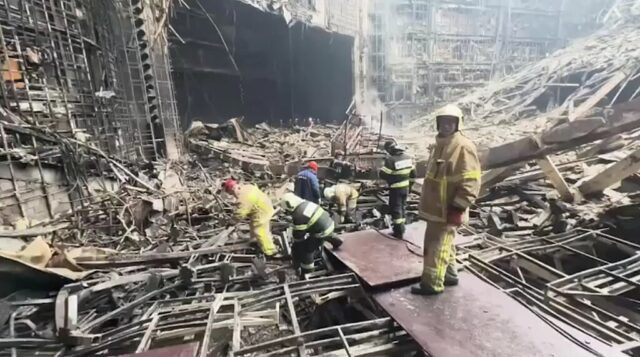
Brief: Questions Around Terrorism in Tajikistan and Central Asia Abound After Crocus City Hall Massacre
Publication: Terrorism Monitor Volume: 22 Issue: 7
By:

Executive Summary
- Russia’s crackdown on Tajiks following the March 22 Crocus City Hall massacre is likely leading to further alienation and subsequent radicalization among members of the ethnic group living in Russia. These individuals would bring these ideas with them if they are deported back to Tajikistan, which has largely avoided attacks by Islamic State. As a result, the threat of Islamist terrorism in Russia and Central Asia is rising.
- This could be capitalized on by Islamic State in Khorasan Province (ISKP) in particular, which claimed credit for the Crocus City Hall attack and has been focusing on recruiting Tajiks for several years.
After Islamic State in Khorasan Province (ISKP) claimed credit for the March 22 massacre of dozens of spectators in Moscow’s Crocus City Hall, attention turned towards Tajikistan’s “terrorism problem.” The four main suspected attackers were from Tajikistan, and had been recruited to carry out the massacre by Islamic preachers and on social media sites, such as Telegram (Radio Free Europe/Radio Liberty, March 25). While there is a Tajik-focused jihadist group, Jamaat Ansarullah, active in Afghanistan, it has not been implicated specifically in the attack. Jamaat Ansarullah has grown significantly in the last decade, raising questions about its potential to recruit alienated Tajik migrant workers in Russia. Russia’s harsh backlash following the Crocus City Hall attack is likely to only increase this alienation (see Eurasia Daily Monitor, September 25, 2012).
ISKP had been recruiting Tajiks in advance of the attack in Moscow (WION [India], March 25). Two years before the attack, for example, ISKP began releasing propaganda—in Tajik—that increasingly focused on venerating Tajik martyrs, while also accusing the Taliban of being a Pashtun-centric organization (see Terrorism Monitor, July 15, 2022). The Taliban, for its part, seems to recognize ISKP’s attempt to poach Tajik recruits and, in turn, has increasingly begun translating messages from its supreme leader, Hibatullah Akhundzada, into Tajik as well (X/@danilogiurdanel, April 6).
Five Taijks had also been involved in plots to attack U.S. military facilities in Germany in 2020 (Radio Free Europe/Radio Liberty, April 15, 2020). These plots were masterminded by IS operatives in Afghanistan and Syria. Like the attack in Moscow, the Tajiks in Germany, who were laborers, received commands from IS “central” operatives. These individuals were highly vulnerable to IS recruitment, due to their status as alienated migrants, lacking the families and social support systems that they might have otherwise enjoyed at home.
In contrast to Russia and Europe, Tajikistan itself has largely been spared from IS attacks. This is due to both the Tajik government’s strict monitoring of religious extremism and the Afghan Taliban’s desire not to provoke Central Asian countries into retaliatory action. The greater threat to Tajikistan, like Russia itself, comes not from the Taliban but from ISKP. The last major terrorist attack in Tajikistan was in 2018, when ISKP agents killed four Western cyclists who were touring the country (Radio Free Europe/Radio Liberty, July 30, 2018).
IS is devolving authority to its “external provinces” to a greater extent, allowing the decentralization of logistics and financing, and increasing the likelihood that the organization may carry out attacks in relatively unexpected places (The East African [Kenya], July 28, 2023). In the past, IS “core” concentrated on Europe and ignored Central Asia. However, if Central Asians in ISKP now have more of a say in the organization, then Tajikistan, Central Asia writ large, and Russia could be coming under much greater threat than was previously believed.



